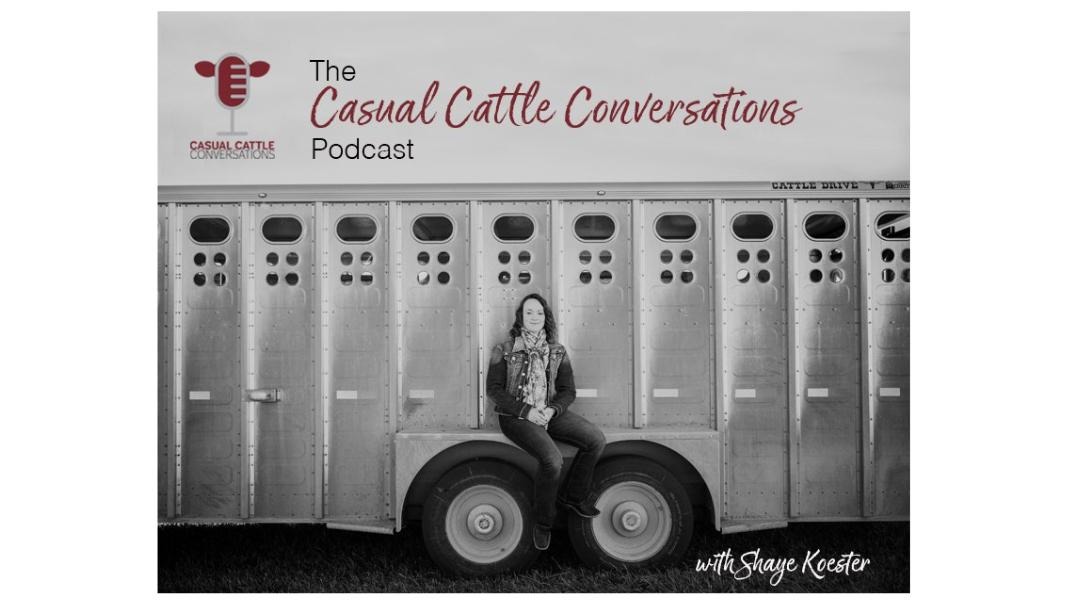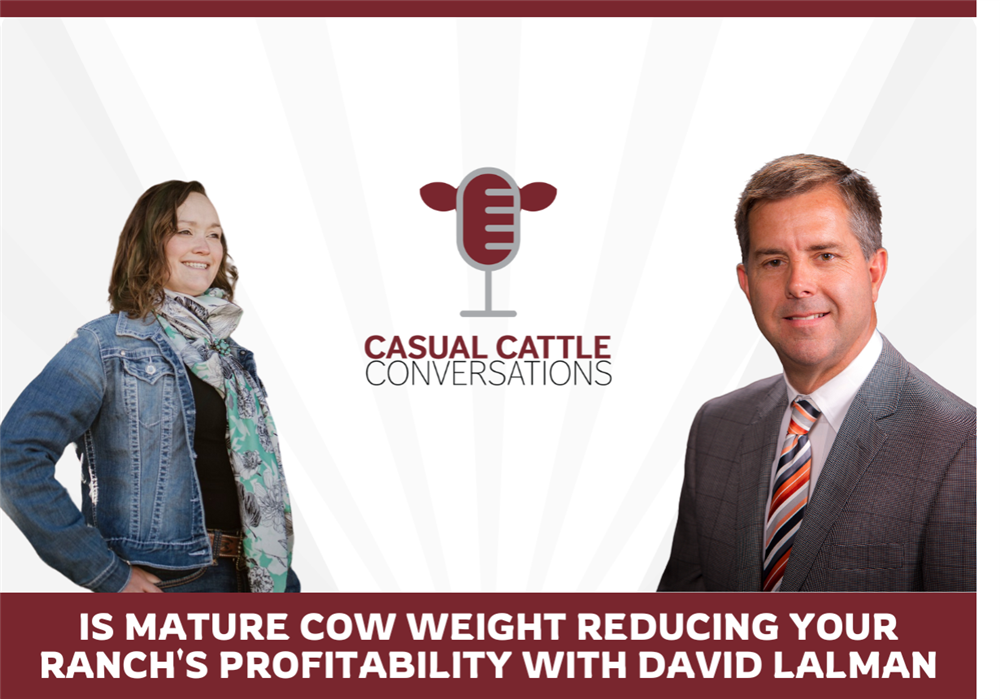The Casual Cattle Conversations Podcast: Mature Cow Size, Input Costs and Ranch Profitability with David Lalman
Thursday, October 17, 2024
Reference: Podcast Corner

Mature Cow Size, Input Costs and Ranch Profitability with David Lalman
October 14, 2024 | Written By Shaye Koester
What’s the impact of mature cow size and ranch profitability? Dr. David Lalman – professor of Animal and Food Sciences at Oklahoma State University – and Shaye Koester-Wanner tackle this question during this thought-provoking podcast episode. David and Shaye discuss the assumed correlation between mature cow weight and feed intake as well as how some cattle are above average in weight but below average in feed intake.

Click Here to listen to Shaye's Podcast
The objectives of reducing input costs and increasing stocking rates are frequently approached with the mentality – how do we spend more days grazing and less days supplementing feed? While this is certainly a contributing factor to ranch profitability, it is not the entire picture. When focusing on moderating costs and avoiding the need to artificially modify environments to increase production, it is critical to understand what factors impact cow efficiency and how to select for these traits.
David Lalman, PhD – Extension Specialist for Beef Cattle and Professor of Animal and Food Sciences at Oklahoma State University – conducted various studies related to mature cow size and feed efficiency with the intent of helping cattlemen and women someday be able to cost-effectively sort for the best cows for their herds. He started with these two measurements because in general, a high mature cow weight corresponds to high feed intake. “My ideal cow is one that is resilient and productive in the best environment and still productive in the worst of years,” said Lalman. A good cow is expected to have a calf each year, provide adequate milk while maintaining body condition and not eat her way out of a profit.
Production also plays a role in how efficient a cow or bull is. Year over year cattle producers have been selecting for higher-growth bulls and replacement females to sell calves with higher weaning and yearling weights. Consequently, this led to a yearly increase of 7 lb in average mature cow size since 1978. Lalman said, “A person who had a 30-year career in the cattle industry and selected for industry average growth traits each year should be grazing about 13% fewer cows today than 30 years ago. That’s the impact of cow size on stocking rate over time, based on overall industry average.” While this old rule of thumb for cow efficiency still carries some weight, it is not the end all be all. Advancements in genomic and feed intake research are sorting out the outliers and providing cattlemen with more information to select for their ideal cows.
When Lalman evaluates groups of cattle for overall efficiency, he breaks the data set into 4 quadrants:
-individuals with above average Feed Intake EPD and above average Mature Weight EPD
-individuals with above average Feed Intake EPD and below average Mature Weight EPD
-individuals with below-average Feed Intake EPD and above average Mature Weight EPD
- individuals with below-average Feed Intake EPD and below average Mature Weight EPD
Ultimately there are cows and bulls that fall into each quadrant. Which type is best for you depends on the resources you have available and the goals of your operation. Lalman said, “We haven’t gotten to the point yet where we can point to one genetic selection tool to evaluate for efficient cows in a herd, but there are pieces available that are helpful.” He encourages cattlemen and women to use a combination of mature cow weight and feed intake data when selecting for efficient cattle. Another factor to consider when considering mature cow size is your cull cow marketing strategy. Smaller cows will offer less cull cow weight.
There is no one-size-fits-all approach for selecting efficient cattle (pun intended), but mature cow size and feed intake are important considerations for both seedstock and cow-calf producers. “If you aren’t paying attention to mature cow size, feed intake and their ability to maintain or add weight; you may create a less resilient cow herd when times get tough,” said Lalman. Take it back to the basics of knowing your finances, resources and goals to select cows and bulls that will produce profitable progeny for your operation. Lalman’s final thought to share with ranchers is, “I encourage people with a priority breeding objective to control cow cost to use AI sires or bloodlines with high accuracy for these two traits. And for them to encourage their seedstock suppliers to collect these phenotypes and turn them into breed associations. Over time, this will improve commercial producers’ ability to control cow cost and improve cow efficiency.” Listen to the full conversation on the Casual Cattle Conversations podcast.
Sign up to stay connected
- News
- Property Alerts
- Save your favourite properties
- And more!
Joining Farm Marketer is free, easy and you can opt out at any time.
